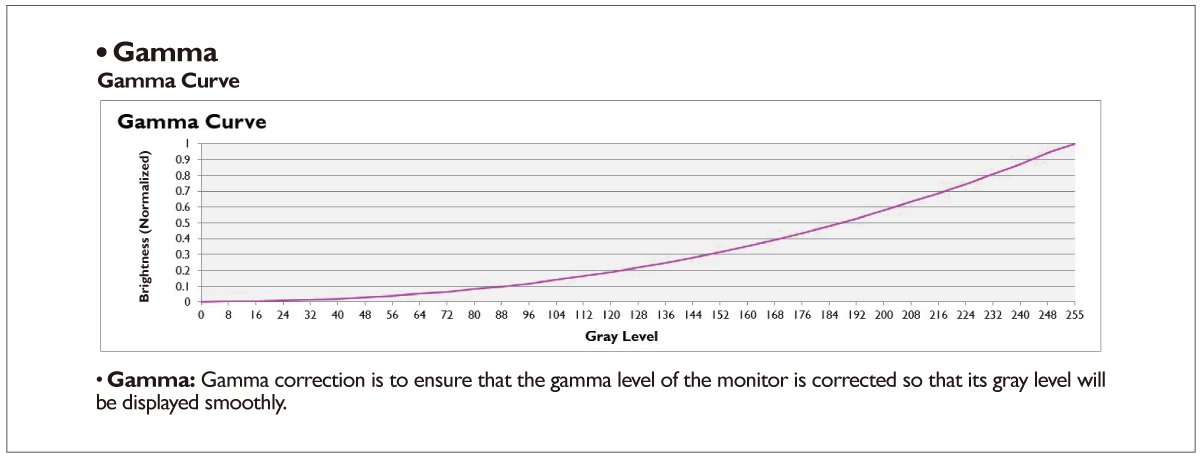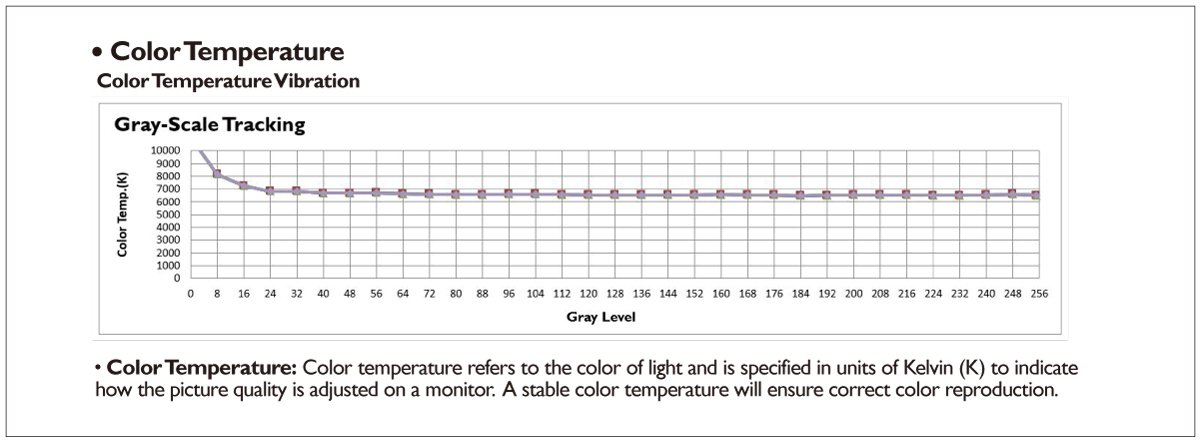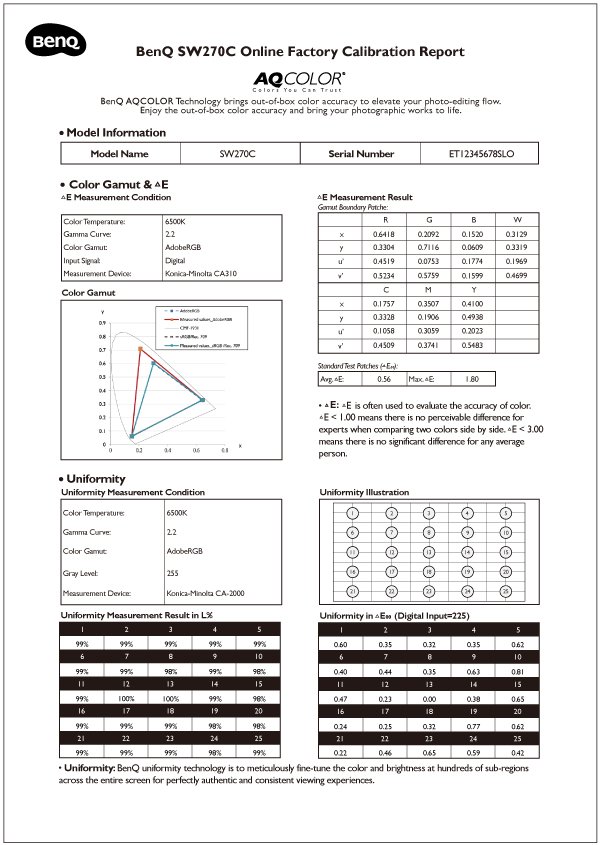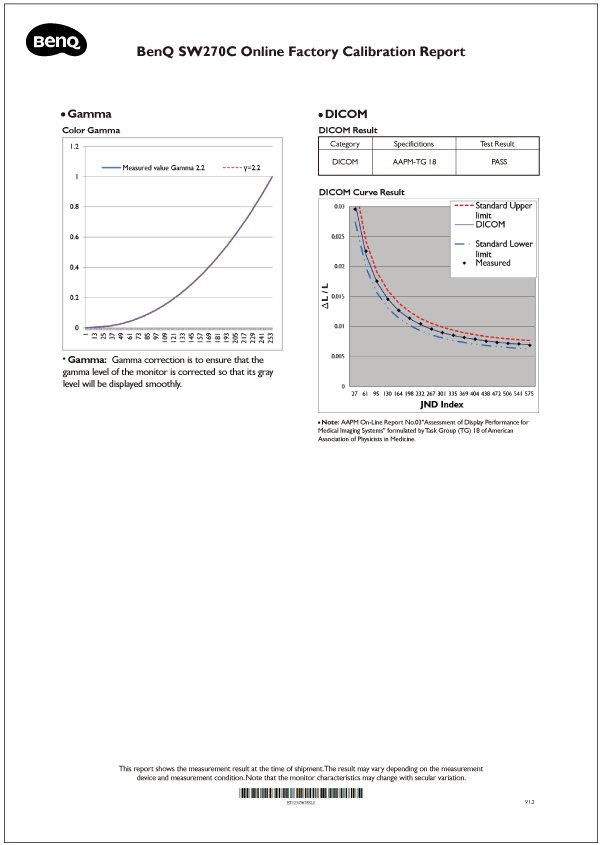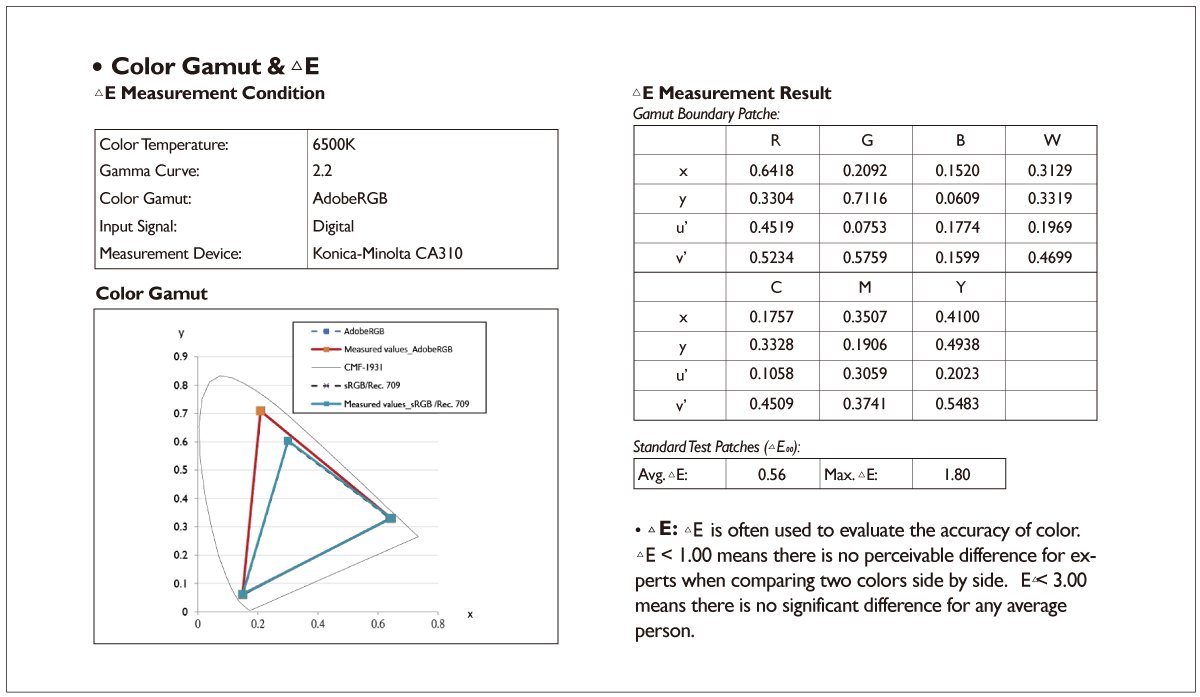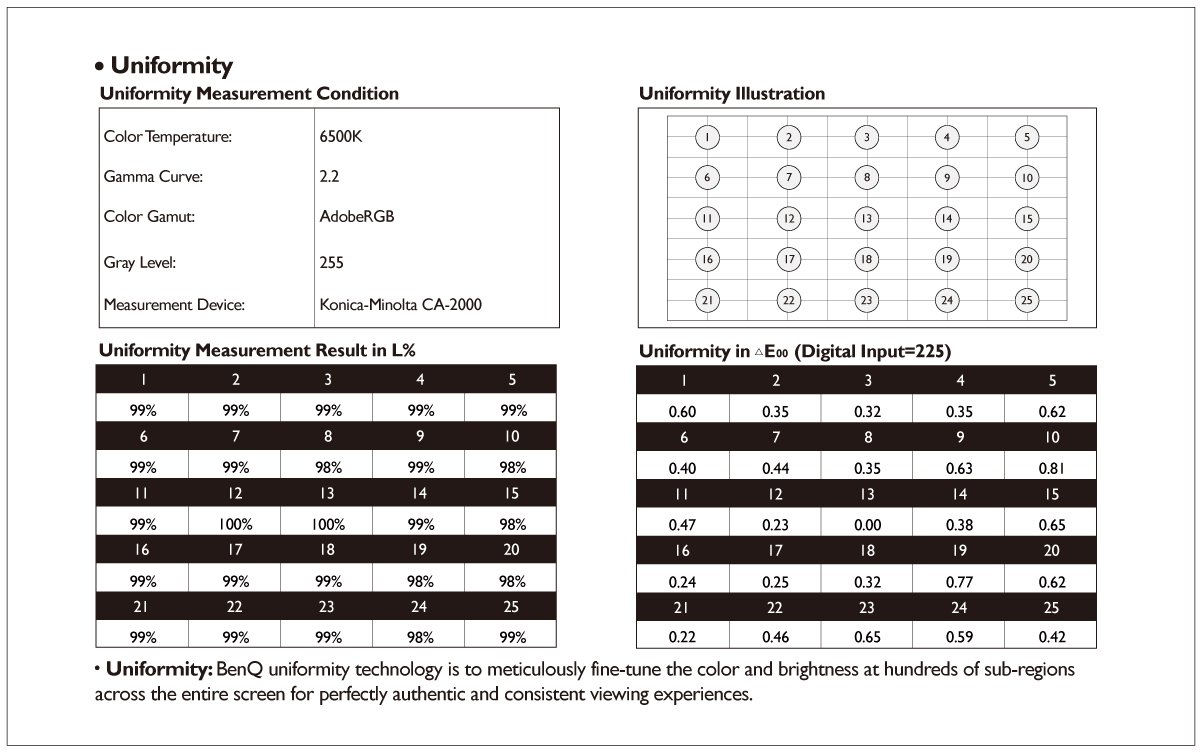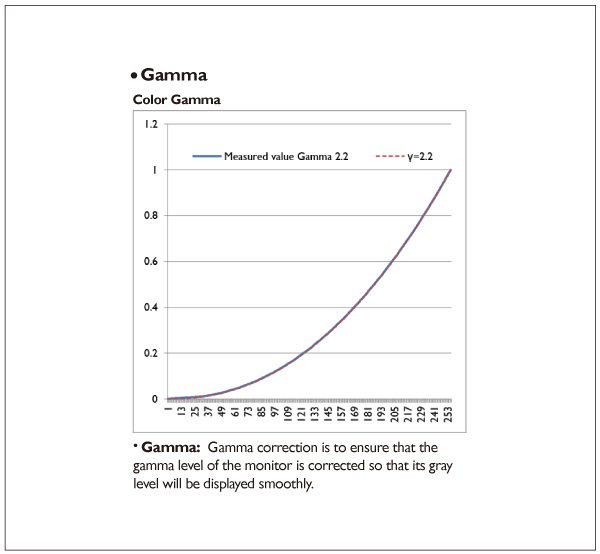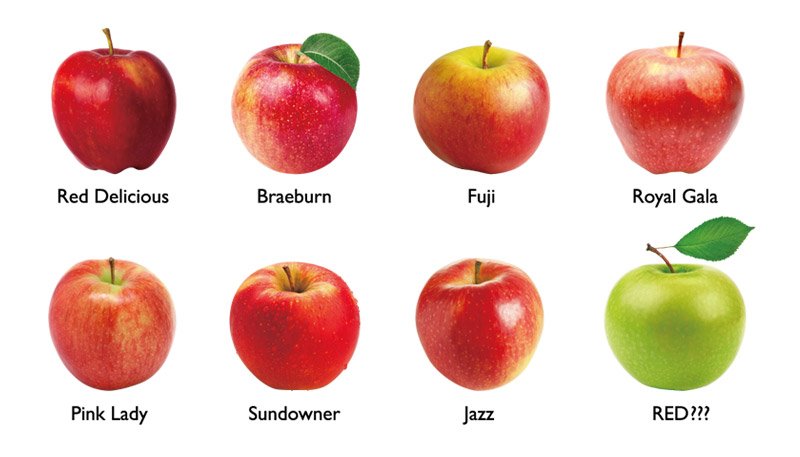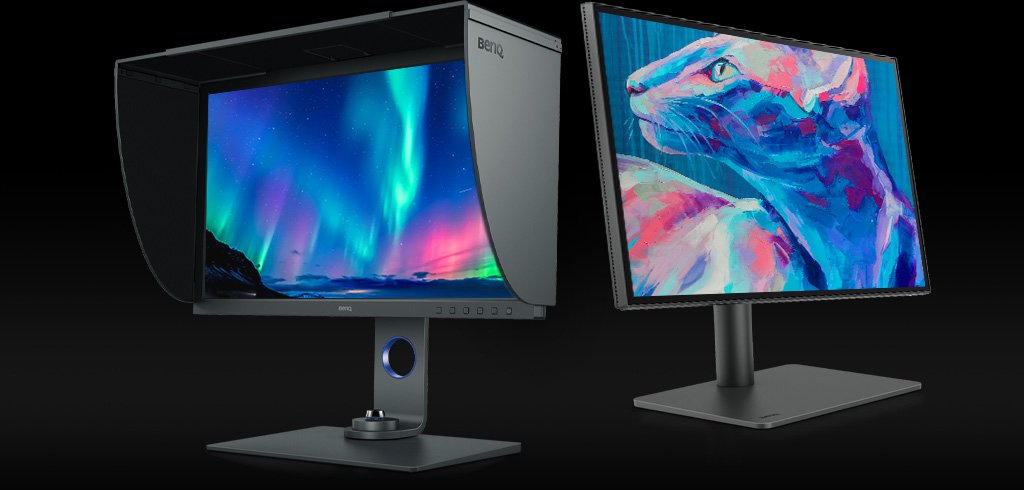Both the BenQ DesignVue Designer Monitor PD series and PhotoVue Photographer Monitor SW series monitors go through factory calibration, but the process is slightly different for each series. Therefore, the calibration report presented is also slightly different. On the calibration report for PD series monitors, color gamut, Delta E, gamma curve, and color temperature are shown. And each of these items was explained in detail in previous paragraphs. For SW series monitors, color gamut, Delta E, gamma curve, color temperature, uniformity and DICOM curve were adjusted, and these were all reflected in the calibration report. These items were also fully discussed in previous paragraphs as well. Now, we have a better understanding of the importance of the calibration report, and we also can interpret what the data means and appreciate how well the monitors are calibrated.



